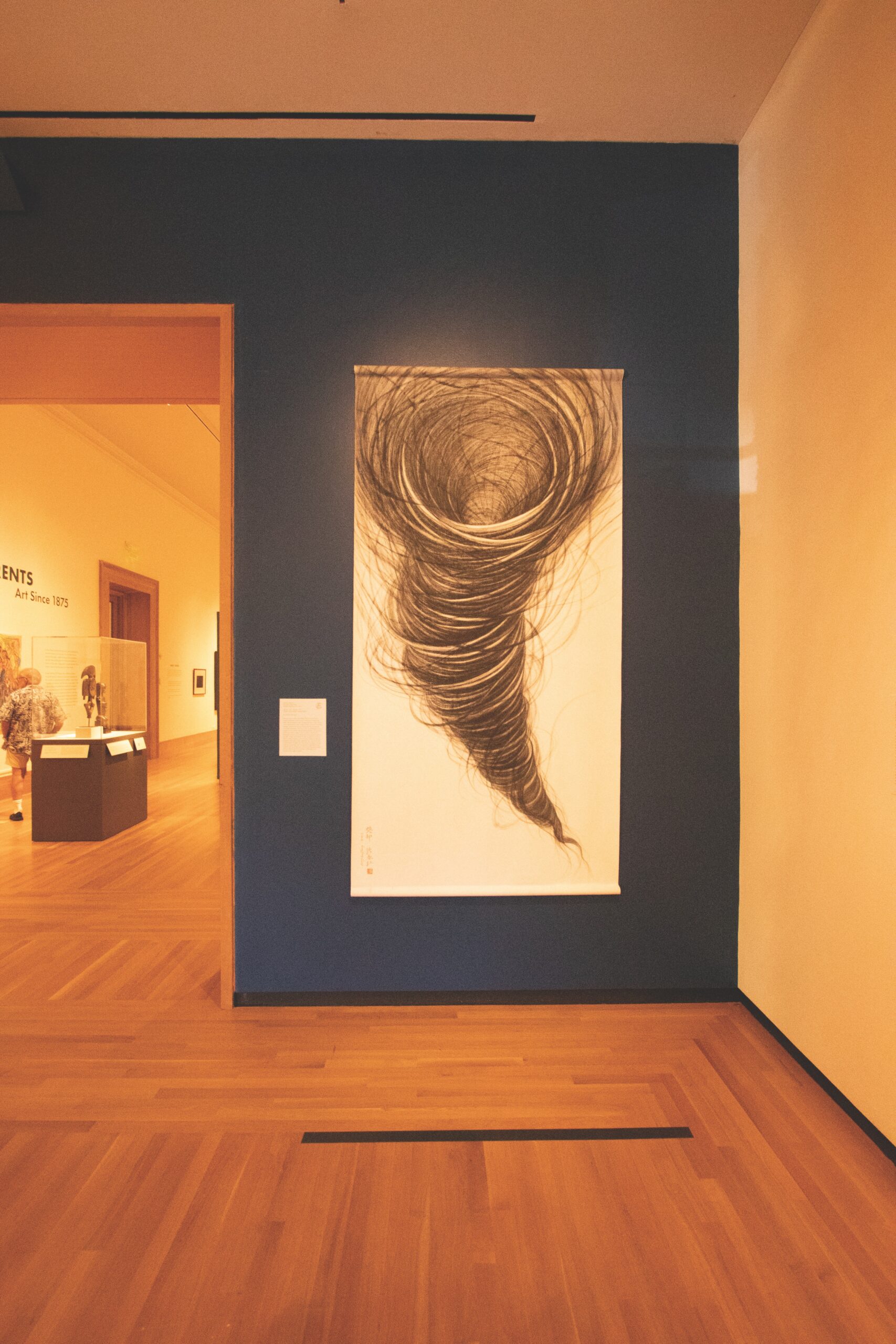Hong Chun Zhang’s “The Eye of the Tornado” explores immigrant identity and cultural exchange
September 13, 2024
 Isa Cruz
Isa CruzYesterday, the Bowdoin College Museum of Art (BCMA) invited Hong Chun Zhang, a Chinese-born and Kansas-based artist, to the Visual Arts Center to discuss her piece “The Eye of the Tornado.” The work features a spiral of Zhang’s hair drawn in Chinese ink on Alcantara fabric, a type of durable synthetic Italian textile she started using instead of the more fragile medium of paper. BCMA Curator Casey Braun added Zhang’s piece into the exhibition “Threads: Artists Weave Their Worlds” in an attempt to push the boundaries of what constitutes textile art.
Both BCMA Co-Director Anne Collins Goodyear and Braun had met or worked with Zhang before bringing her to Bowdoin. Goodyear was a curator at the Smithsonian Institution more than a decade ago, where Zhang’s work was being shown at the time, and Zhang was on the advisory council at the University of Kansas’s Spencer Museum of Art while Braun worked there.
“One of the reasons we love her work so much is it really accommodates so many different perspectives. I think there are many points of entry into [Zhang]’s work,” Goodyear said. “[Zhang], in very interesting ways, is playing with a lexicon of artistic languages. She is well known for her excellence in the tradition of Chinese ink painting and these beautiful, long scroll formats, but at the same time, she’s producing a very American image that invokes her own physical identity.”
Zhang’s art has an audience beyond the world of visual arts. During the Bowdoin International Music Festival over the summer, the New Composers program brought students from around the world to create music based on art in the BCMA. One student, Yuxuan Lin, composed a piece titled “Tresses” based on “The Eye of the Tornado,” which debuted in Studzinski Hall this summer.
“[“Tresses”] was interesting,” Zhang said in an interview with the Orient. “Just listening to the energy of the music, the rhythms—it really captured the piece in a very abstract way.”
The BCMA also organized a lunch and coffee with Zhang before her talk, where students had an opportunity to speak with the artist.
“Sometimes, you just want to ask an artist less academic, probing questions,” Andrew Tran ’26 said. “Especially when a lot of professors and curators and people from the Brunswick community come to these larger lectures. Having a more intimate conversation with an artist [lets] you see them on a more personal level.”
Zhang’s lecture tracked her development as an artist through time, from her family—all artists—in Shenyang in northeastern China to her education at Beijing Central Academy of Fine Arts to her current installations in museums internationally.
When she first came to the United States in 1996, Zhang’s work was in the traditional fine style of Chinese art, a type of precise ink artwork on rice paper. It focused on her family ties and the migrant experience, but she found that neither her United States nor her mainland Chinese audience fully understood her pieces.
“When [people] saw my early work, they couldn’t quite get it,” Zhang said. “They thought I was criticizing the Communist Party because I was using political figures. Only Chinese people that have experienced both [Chinese and American] cultures can fully understand my work.”
Zhang began to depict hair as a means to highlight her personal experience and build a degree of universality in her work. “The Eye of the Tornado” is no different.
“Hair is such a universal subject,” Zhang said. “When I show my hair pieces, people from different cultures can appreciate it. The strength of my work is that it is always a very detailed, very labor intensive process. I just wanted to create something to show my strength but also have a theme people can have access to.”

Comments
Before submitting a comment, please review our comment policy. Some key points from the policy: